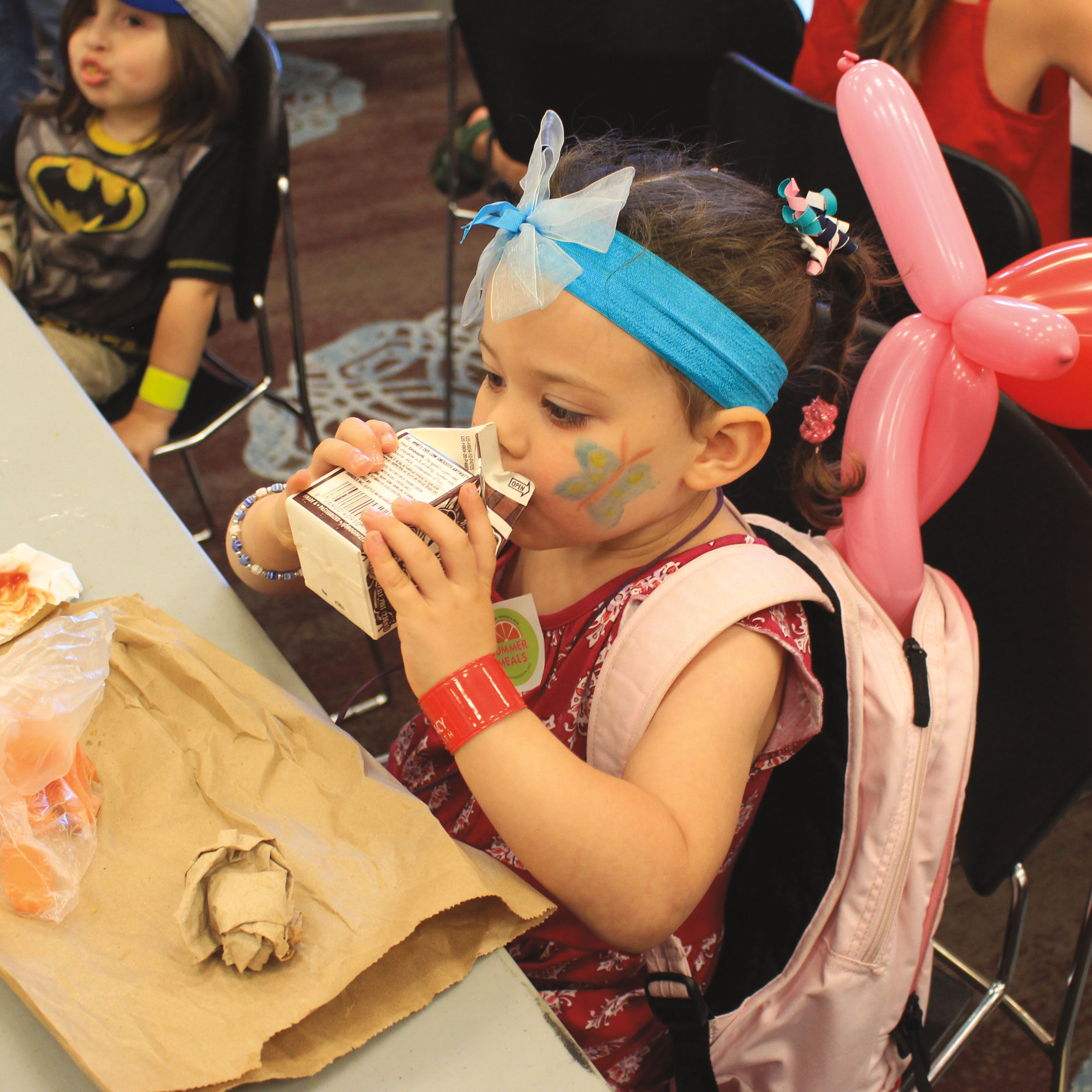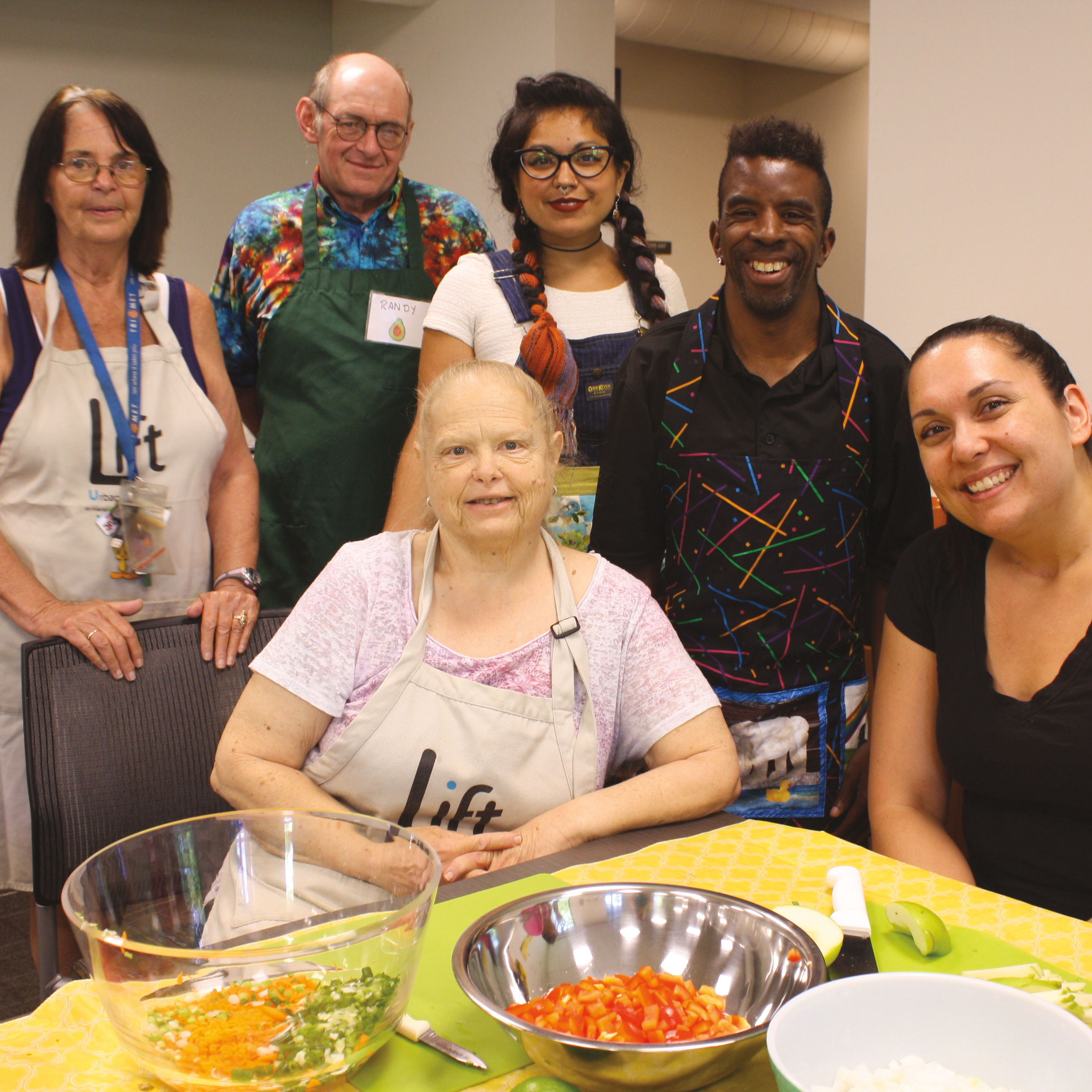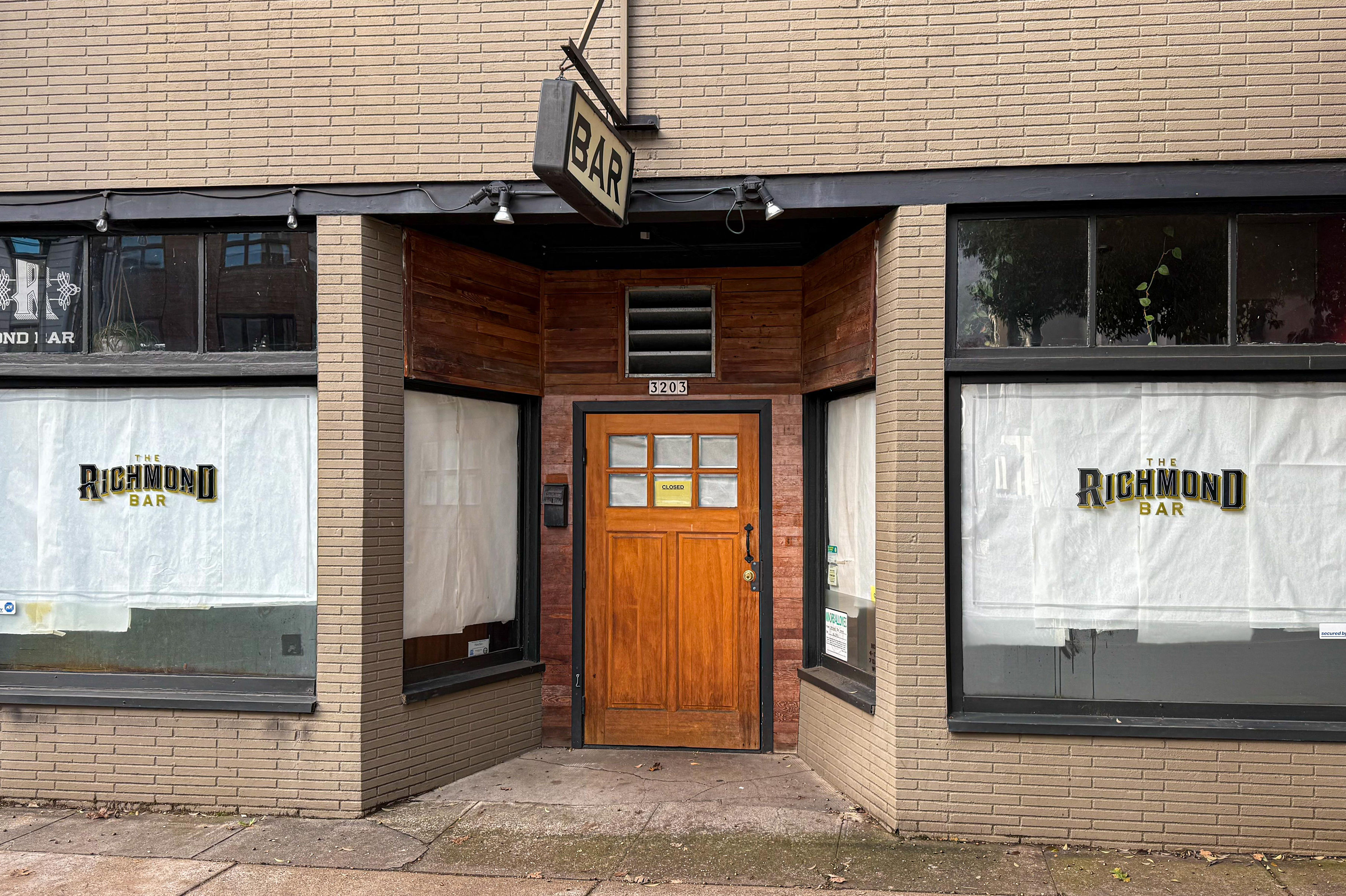Oregon’s Innovative Food Bank Longs for the Day It Shuts Down
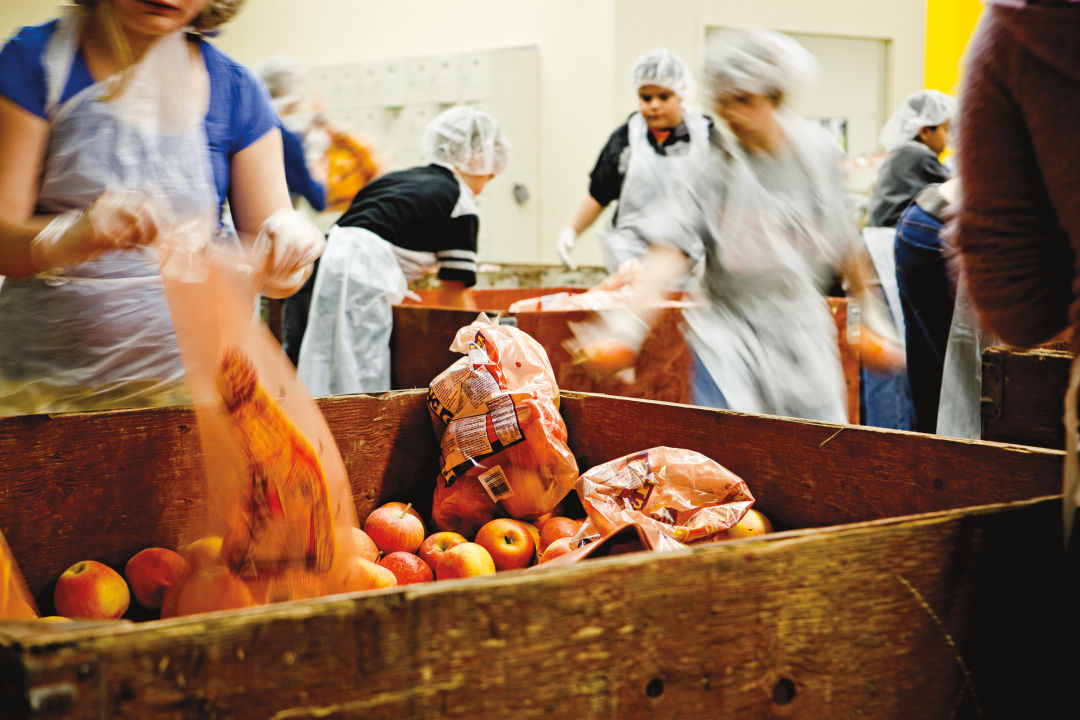
Image: Courtesy Oregon Food Bank
It’s barely 10 a.m. on a chilly Monday in late February. Already, warehouse specialist Shun-Da Hwang has helped shuttle 22,000 pounds of food—bags of fresh oranges and carrots, loaves from Dave’s Killer Bread, Tillamook cheese—from the cavernous recesses of the Oregon Food Bank’s 94,000-square-foot central hub into vans waiting just outside 14 loading docks.
“I run a tight ship,” he says, grinning broadly from under his Trail Blazers beanie. He has to: it’s the end of the month, go time for statewide pantries and meal sites as many of Oregon’s half-million food-insecure residents run out of federal SNAP benefits (a.k.a. food stamps). Now is when the Oregon Food Bank’s 30-year-strong food distribution networks really get cooking.
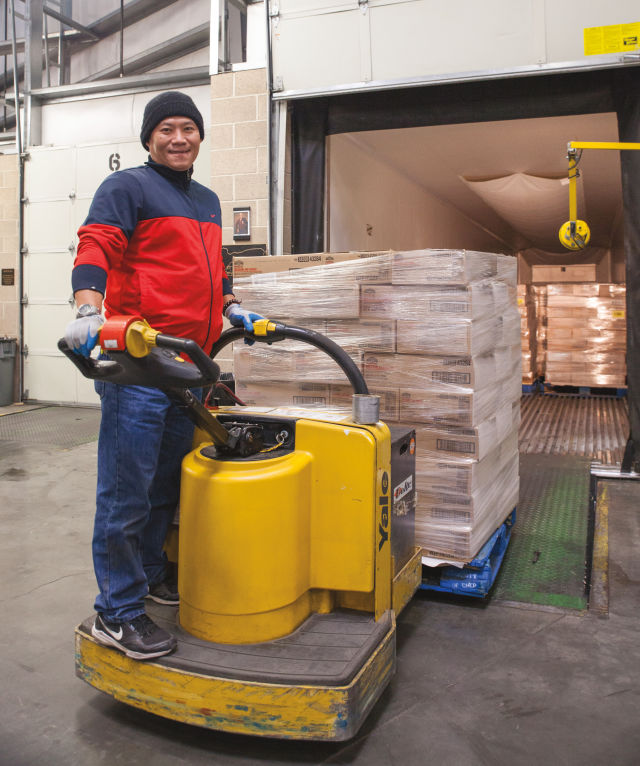
Shun-Da Hwang
Image: Courtesy Oregon Food Bank
In 2016, the Oregon Food Bank distributed almost 100 million pounds of food (38 percent of it fresh fruits and vegetables) to 21 sites across the region—from Coos Bay to Klamath Falls to Ontario and even Clark County, Washington. It’s one of the 10 largest food banks in the nation, in terms of food distributed and funds raised. And it’s the only one among the top 10 (which includes the Food Bank for New York City and the Los Angeles Regional Food Bank) that aims to fill plates across an entire state.
All of which means the Oregon Food Bank is a bit of a national sweetheart among organizations battling hunger. Founding director Rachel Bristol gave OFB decades of stable growth, a legacy continued by current CEO Susannah Morgan’s 22 years of food banking leadership in four states. Morgan, who joined OFB in November 2012, has been called in to help start new food banks in places such as Las Vegas; she regularly fields inquiries from hunger advocates who want to know how OFB does it. What does she want to tell them? To take a cue from what happened here in 1988—when Oregon’s top two food banks, Oregon Food Share and the Interagency Food Bank, merged to become OFB—and start collaborating like crazy.
There’s an irony to being one of America’s most successful food banks: true success would mean becoming obsolete. Inherent in OFB’s mission—“To eliminate hunger and its root causes”—is a mandate, Morgan says, for the organization to put itself out of business.
“Food banks mean there’s a problem with our society,” she says, adding she spends much of her time “thinking about how can I shut us down.”
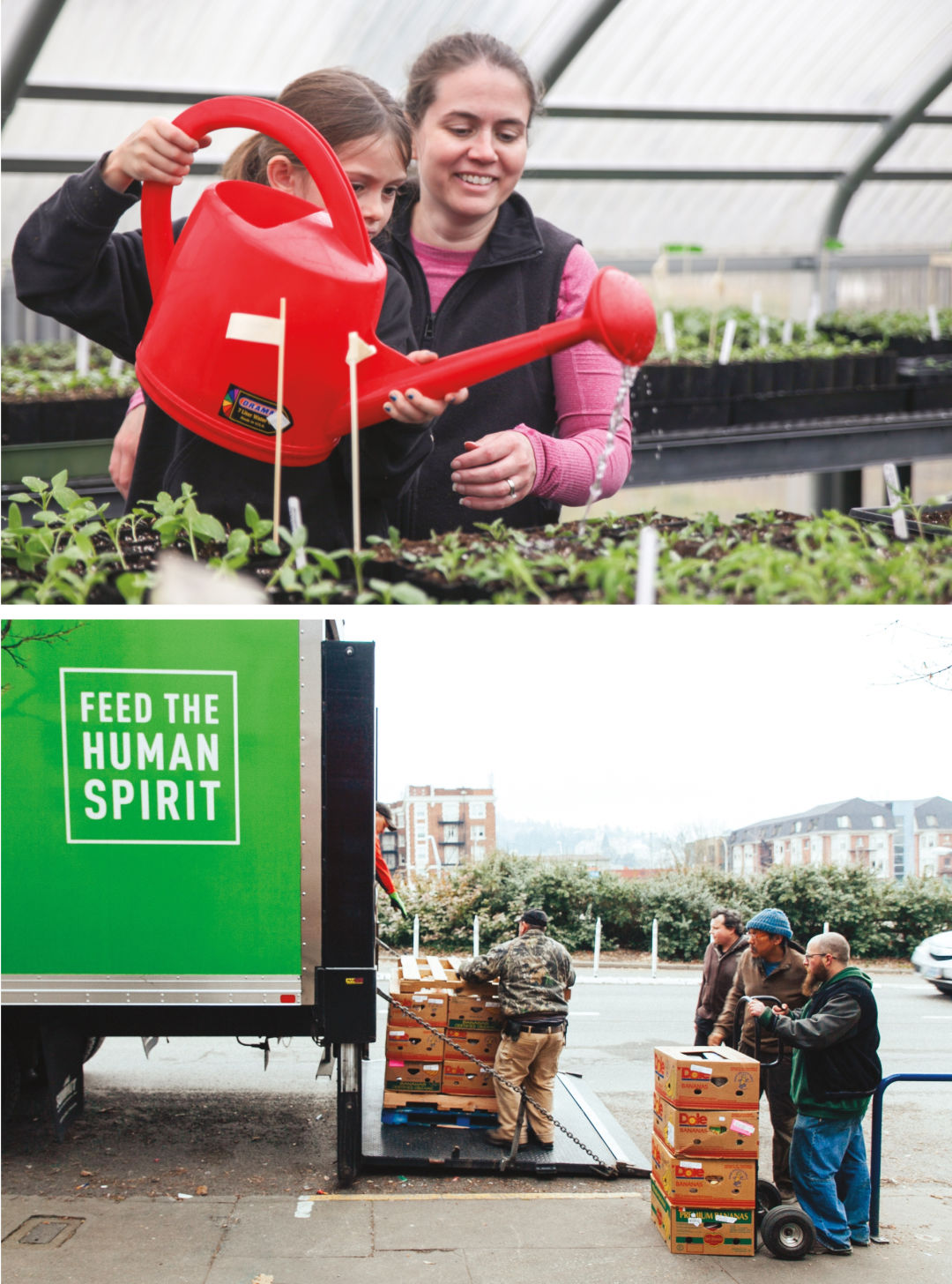
Image: Courtesy Oregon Food Bank
To work toward that goal, OFB has evolved from its early role as a straightforward pantry into a hybrid animal: part food mover, part community center, part political activist group. And while Morgan admits the root causes of hunger are huge (among them: poverty and systemic inequities like racism, ableism, and sexism), she derives hope from the simple act of, well, acting.
“This is not the food bank saying hey, we’re going to single-handedly end racism in this country,” she says. “We’re saying this is an issue we need to be a part of. And if you don’t start now, it will be that many more generations until it gets fixed.”
This determination drives free multiweek educational offerings like OFB’s “Seed to Supper” gardening course, or “Cooking Matters,” in which participants enhance their food ingenuity—the ability to make supplies stretch longer—through lessons on making chicken stock or utilizing vegetable peelings. Then there’s advocacy: In 2016, OFB staff and volunteers helped drive Portland’s successful $258 million “Yes for Affordable Homes” bond measure. Now, they’re readying for battle as Congress entertains the Trump administration’s proposal to gut SNAP and replace it with a food box home delivery system Morgan says works against everything OFB stands for: the dignity (and practicality) of choosing your own food; support for small businesses (rural grocery stores in particular); an emphasis on fresh, unprocessed foodstuffs; and food access for all hungry residents, regardless of housing status.
“The [existing] SNAP program does all of those things,” Morgan says. “We should invest more in a program that is fantastically succeeding. When I think about what I’m willing to take a bullet for, SNAP is absolutely the top of my list.”
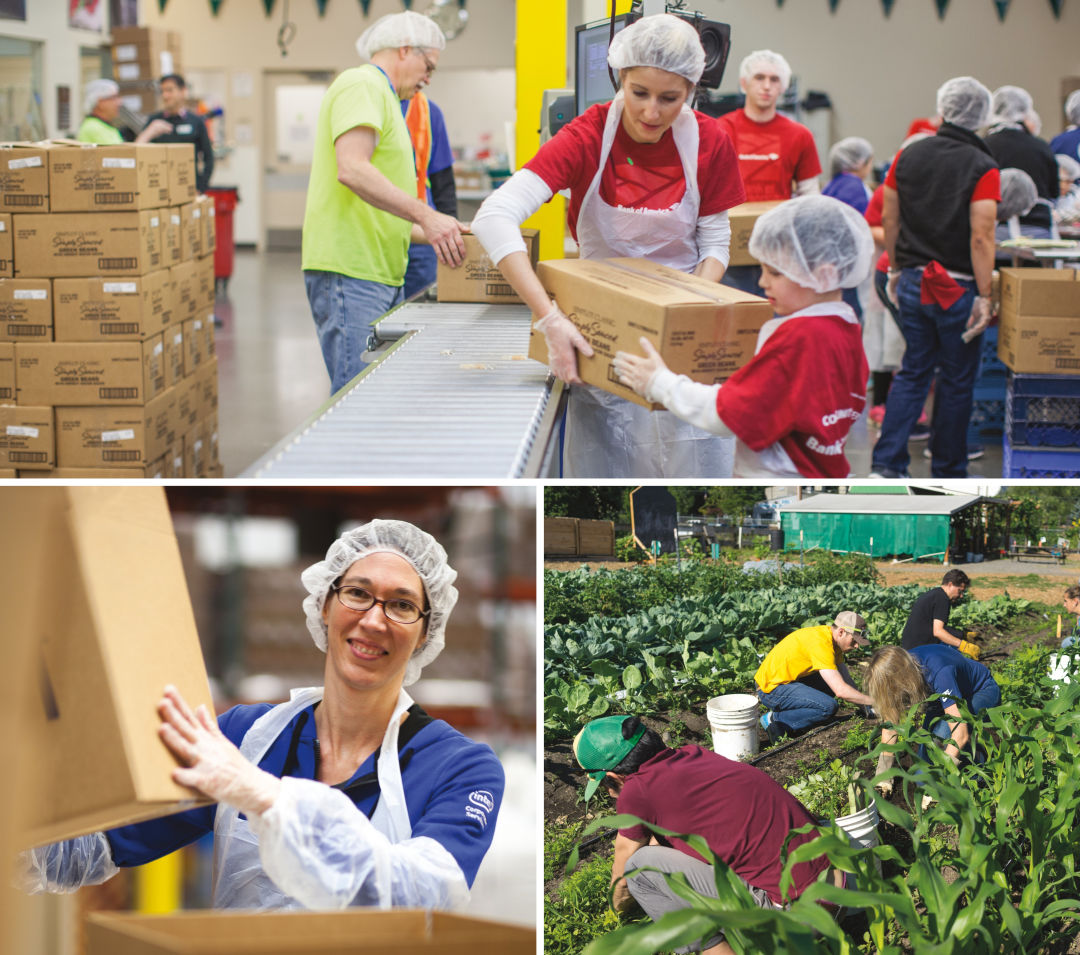
Image: Courtesy Oregon Food Bank
It might seem reasonable for Oregonians to feel proud (as Morgan admits she does) of a nonprofit committed to serving hungry people that federal programs can’t—or, looking to the future, possibly won’t—reach. But on another level, she asks, how proud should we really be of the fact that OFB is bigger today than it ever has been?
“We grow enough food in Oregon to feed everyone who needs food assistance in Oregon—particularly if they’re willing to eat green beans, potatoes, onions, apples, and pears,” says Morgan. “We don’t have a food problem. We have an access problem.”
It’s hard to reconcile Morgan’s words with the abundance within OFB’s massive warehouse, where an army of forklifts move pallets of donated Harry and David pears, grains from Bob’s Red Mill, even stone fruits from California. Morgan estimates the food bank leveraged an extra $200 million in grocery purchasing power for hungry Oregonians last year—a boost that pales in comparison to SNAP’s more than $1 billion annual contribution to our state economy.
And yet Oregon remains, as it has for decades, one of America’s hungriest states. Unless we fix hunger’s root causes, Morgan says, the Oregon Food Bank’s future will never be in doubt: a success story, as testament to a far greater failure.
Portland Monthly examines hunger in Oregon in our March, April, and May issues. Want to help local organizations feed Portlanders? Go here.
